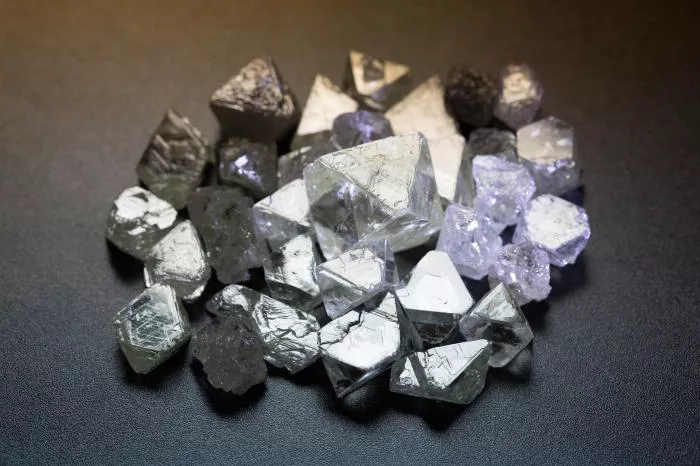Rough diamonds, often known as uncut or natural diamonds, are the raw form of diamonds that have not yet undergone any processing or cutting. While polished diamonds can command high prices in the market, rough diamonds are relatively inexpensive. This article explores the reasons why rough diamonds are so cheap, examining factors like supply and demand, grading, market perception, and the costs associated with turning rough diamonds into polished gems.
Understanding Rough Diamonds
Before diving into why rough diamonds are cheaper, it is essential to understand what they are. Rough diamonds are found in nature and extracted from the earth. They are typically opaque, and their shapes can vary significantly. Unlike polished diamonds, which are cut and shaped to enhance their brilliance, rough diamonds retain their natural form.
The process of turning a rough diamond into a polished one is intricate and labor-intensive. This process adds significant value to the final product. However, this leads to the question: why are rough diamonds so cheap compared to their polished counterparts?
Supply and Demand
One of the primary reasons rough diamonds are less expensive is the balance of supply and demand in the market.
Abundance of Rough Diamonds
Rough diamonds are more abundant than polished diamonds. Many mines worldwide extract rough diamonds daily. The supply of rough diamonds tends to outstrip the demand, particularly for lower-quality stones. This excess supply often drives prices down.
Limited Demand for Low-Quality Stones
Many rough diamonds are of lower quality. These stones may have significant inclusions or color imperfections. As a result, they appeal to a limited market. Jewelers and consumers often prefer high-quality polished diamonds. This limited demand for lower-quality rough diamonds further reduces their prices.
Grading of Rough Diamonds
The grading system for diamonds plays a significant role in determining their prices.
Lack of a Standard Grading System for Rough Diamonds
Unlike polished diamonds, which are graded on the Four Cs—carat, cut, color, and clarity—rough diamonds do not have a standardized grading system. This lack of uniformity can create confusion in the market. It makes it challenging for buyers to assess the quality and value of rough diamonds accurately.
Subjective Valuation
The value of rough diamonds can be subjective. Buyers may interpret the quality and potential of the stone differently. As a result, many rough diamonds do not sell for a premium price. Buyers often negotiate prices based on their perception of the stone’s potential. This situation can lead to significant price variations and lower average prices.
Market Perception
The perception of rough diamonds in the market also influences their prices.
Consumer Preferences
Many consumers prefer polished diamonds over rough diamonds. Polished diamonds are associated with luxury and elegance. They are often seen as symbols of status and wealth. Conversely, rough diamonds are perceived as raw and unrefined. This perception affects demand and ultimately pricing.
Branding and Marketing
Jewelry companies invest heavily in marketing polished diamonds. Brands like De Beers have created a strong emotional connection between polished diamonds and special occasions, such as engagements and weddings. This marketing success has led to higher prices for polished diamonds, leaving rough diamonds undervalued in comparison.
Costs of Processing
Turning a rough diamond into a polished gem involves significant costs.
Labor and Expertise
The process of cutting and polishing diamonds requires skilled labor. Experienced gem cutters use specialized equipment to transform rough stones into beautiful gems. The labor costs involved in this intricate process are high.
Technological Investment
Advancements in technology have also impacted the diamond industry. Modern cutting techniques allow for more efficient processing of rough diamonds. However, this technology comes with costs that further contribute to the price of polished diamonds. The costs incurred during processing are not present in rough diamonds, leading to a price gap.
Market Dynamics
The diamond market is subject to various economic factors that can impact prices.
Economic Conditions
Economic fluctuations can affect the demand for luxury items, including diamonds. In times of economic uncertainty, consumers tend to cut back on spending. This reduced demand can lead to lower prices for both rough and polished diamonds. However, rough diamonds may see a more significant price drop due to their lower perceived value.
Investment Considerations
Investors often view polished diamonds as a more stable investment than rough diamonds. The value of polished diamonds tends to hold better over time. This perception further depresses the price of rough diamonds, as investors may be less willing to buy them.
Alternatives to Rough Diamonds
There are several alternatives to rough diamonds that affect their pricing.
Synthetic Diamonds
The rise of synthetic diamonds has disrupted the traditional diamond market. These lab-created stones can be produced at a fraction of the cost of natural diamonds. They often exhibit better quality and can be sold at lower prices. This competition drives down the demand for rough diamonds, contributing to their lower prices.
Other Gemstones
Consumers increasingly explore alternative gemstones. These stones can offer unique beauty and rarity without the high price tag associated with polished diamonds. As more consumers opt for these alternatives, the market for rough diamonds can become even less favorable.
See also: Do Real Diamonds Shine Like a Rainbow?
Conclusion
In conclusion, the low prices of rough diamonds result from various factors, including supply and demand dynamics, the lack of a standard grading system, market perception, processing costs, and competition from alternatives. While rough diamonds may be less expensive, they hold significant value in the jewelry industry. They represent the raw beauty of nature and the potential for transformation into stunning polished gems.
Understanding these dynamics is crucial for anyone interested in the diamond market. Whether for investment purposes or personal enjoyment, recognizing the factors that influence the price of rough diamonds can lead to more informed decisions. As the jewelry industry evolves, so too will the perception and value of rough diamonds.
Related topics:

